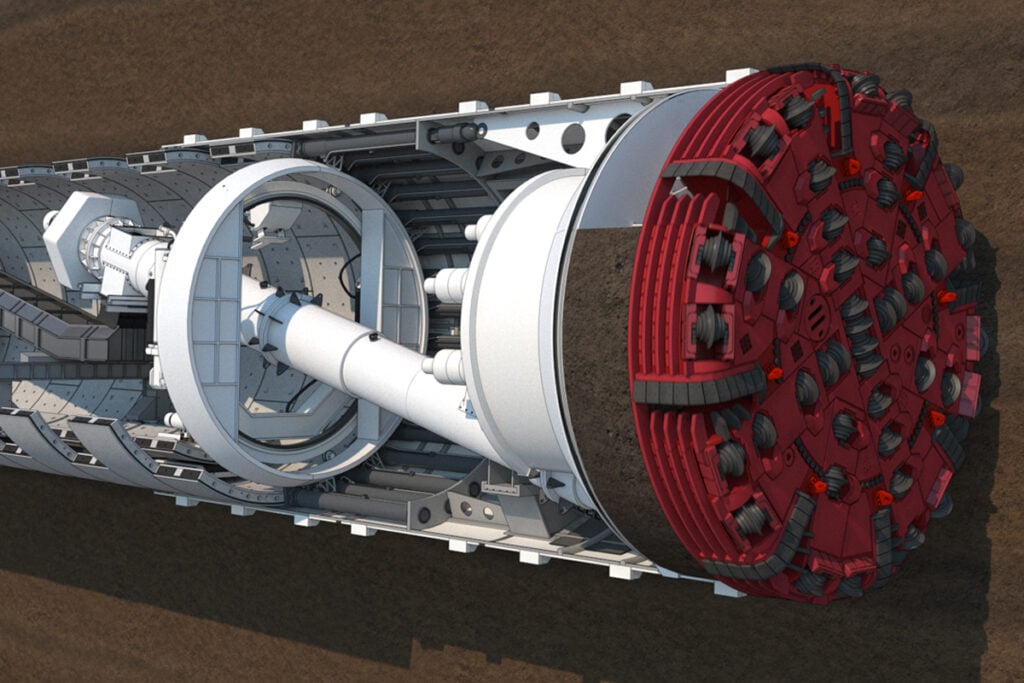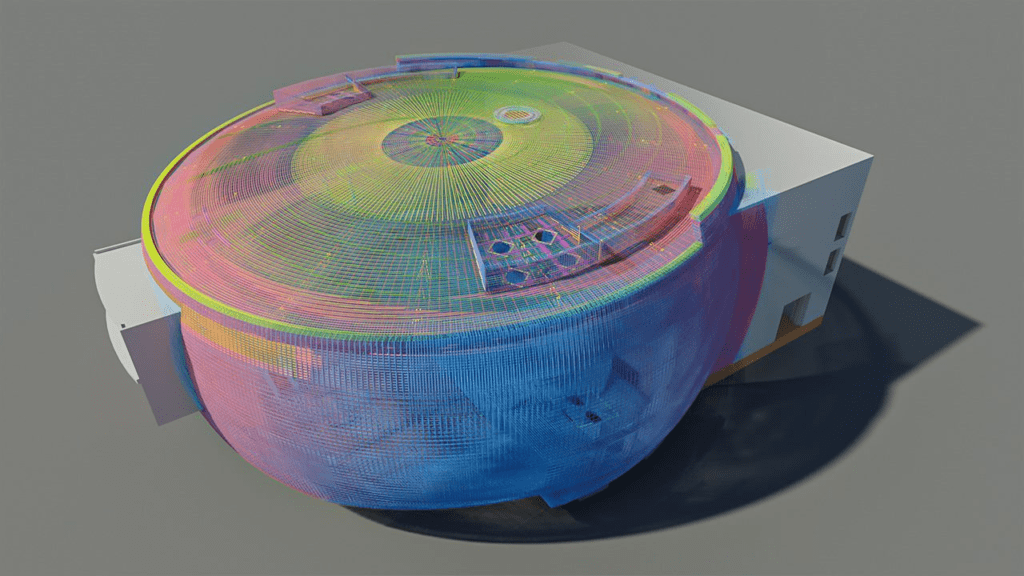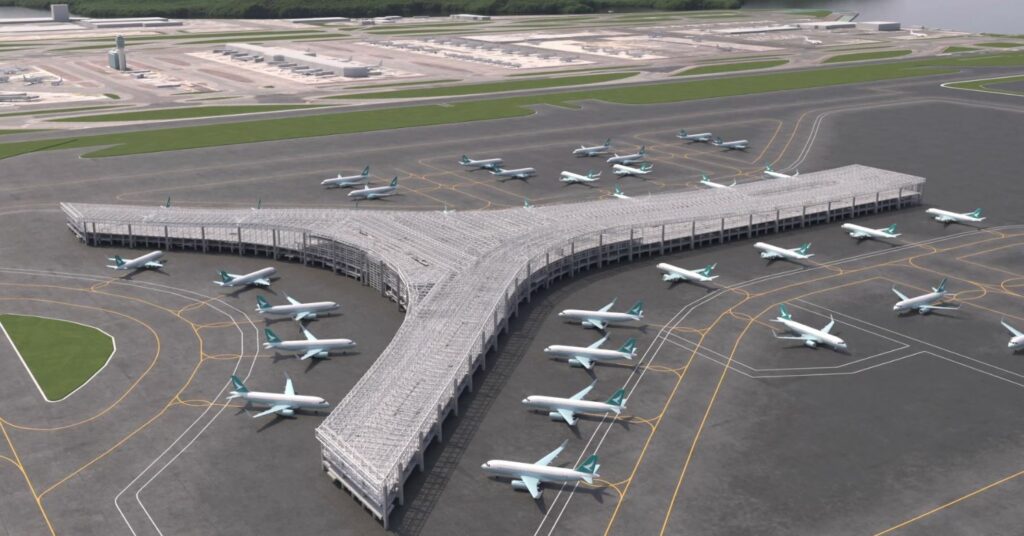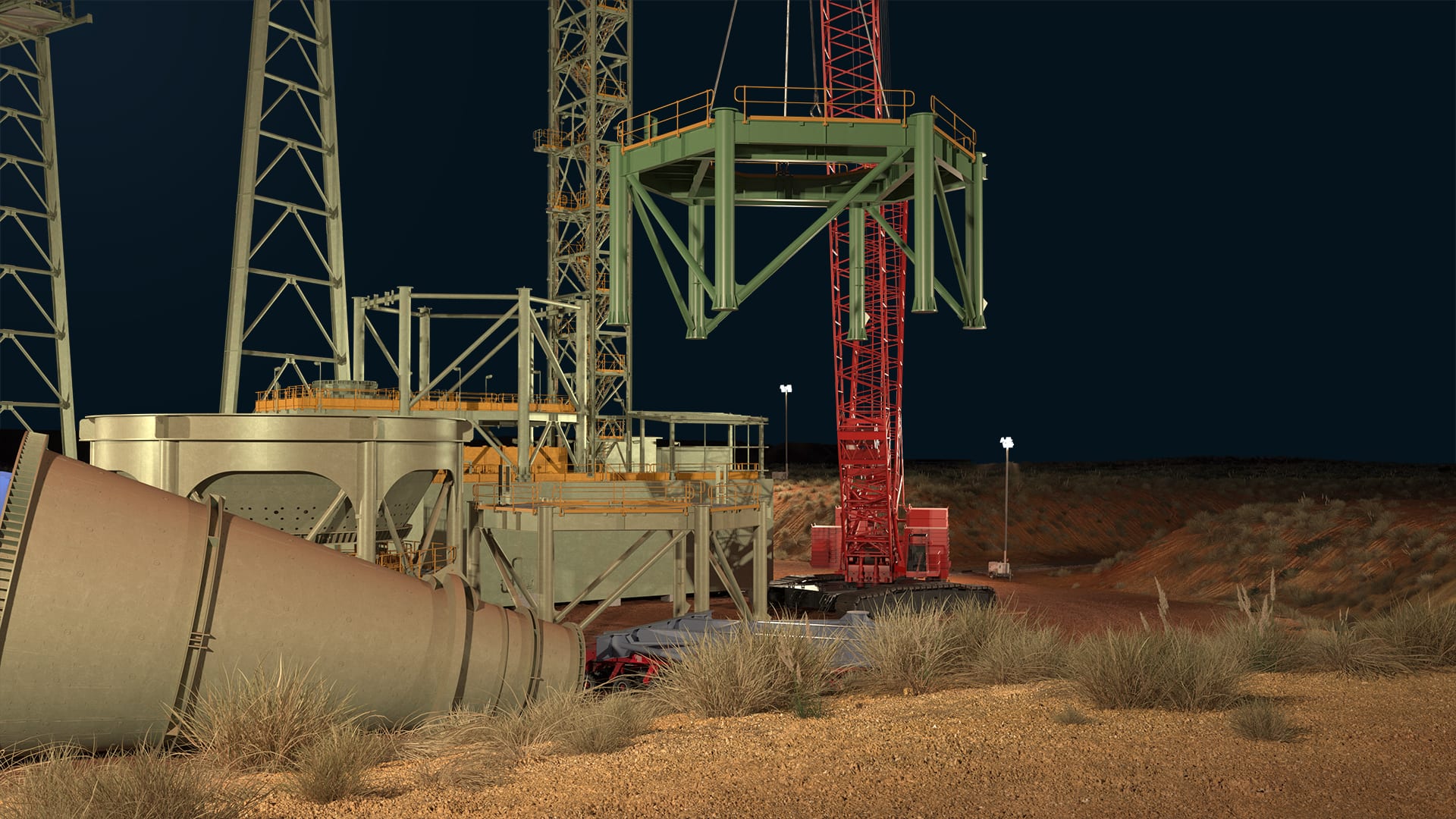De-risk project delivery through meaningful visualization
During the design phase of construction project delivery, numerous models are often produced. Despite information being presented in a 3D environment, the static nature of models limits the extent that construction sequence and methodology information can be easily displayed.
Construction visualizations offer support for the delivery of major construction projects in a number of ways. Visualizations deliver real-time, realistic and technically accurate representations of complex assets, resulting in increased levels of communication, clarity and engagement for all stakeholders.
Visualizations can help the construction industry communicate detailed construction mythology, crane sequencing, site coordination, haulage routes and critical lifts. As the movement of cranes, steelwork and vendor equipment can be fully animated, it allows virtual construction planning to consider in more detail, the logistics of on-site activity.
Applications for Animations in Complex Construction Projects
Construction Sequencing
Construction sequencing animations provide a multitude of benefits, including the ability to visualize complex construction processes, identifying potential issues before they occur. This enables more accurate planning, scheduling, and coordination among project teams, which can ultimately lead to improved efficiency, reduced costs, and on-time project delivery.
Through the integration of complex data sets across a range of disciplines, visualizations can be used to effectively communicate project progress and status to all stakeholders, enhancing collaboration and facilitating better decision-making throughout the project lifecycle.
Stakeholder Engagement
Major construction projects can have huge impacts on local communities, making the social license to operate vital. Open and transparent communication with the local community from the planning phase through to the completion of the construction process is essential.
3D visualizations can be a highly effective way to communicate complex information to the local community, articulating factors such as environmental and social impacts, pollution and waste mitigation strategies, construction timelines, and local traffic management plans.

Tender Support, Sales and Marketing
Contractors can enhance bid packages by incorporating construction sequencing animations into their tender documentation, communicating the comprehension of tender briefs and visualizing that they can execute it efficiently.
By eradicating clashes and design errors early on, rework and delays are significantly reduced to improve scheduling certainty and slash project timeframes. This means contractors’ costs are reduced, and highly accurate quotes can be provided to clients, limiting the risk of variations and reinforcing trust.
3D visualization can also be a great tool for investor relations and marketing presentations. Visualizations can convert complex data sets into a realistic representation that illustrates how an airport, sporting stadium, office building, or hotel complex will look once complete. This gives potential investors an accurate depiction of the project asset in which they are considering investing.
Maintenance and Shutdowns
3D visualizations can used for ongoing asset management and maintenance protocols to mitigate or eliminate safety risks, help reduce schedule slippage, and alleviate economic concerns.
During maintenance and shutdowns, asset owners and operators must communicate with two key stakeholder audiences: the workforce and decision makers. These two audiences require unique information to satisfy their divergent objectives and concerns.
With maintenance and asset management activities often impacting company revenue, shareholders and senior executives want to know the process involved, as well as likely risks. Visualizations can communicate this information quickly and accurately telling the shutdown story via an easily digestible output.
A second animation can be created for the workforce that contains more detailed information, outlining step-by-step how the maintenance works need to be executed. This helps to reduce or eliminate workplace risks, which should be at the core of any industrial workplace’s values.
With the input of the design and construction or operations teams, these animations are frequently used for maintenance and shutdown activities to reduce schedule slippage and mitigate safety concerns through upfront virtual planning, ensuring that project requirements are fully understood and agreed by all parties.
Training and Workplace Learning & Development
The use of animations in training and workplace learning & development can help save time and money. For instance, training conducted in the virtual world can be facilitated remotely at head office, eliminating additional expenses such as travel.
In the construction sector, employees are often at risk of exposure to dangerous situations. 3D animations, visualizations and immersive environments can help mitigate these risks. Animations offer capabilities that ‘normal’ training videos simply do not possess. They can zoom in to a microscopic level, display the internal workings of machinery that are not visible to the naked eye, and depict processes that might be too dangerous to film with a camera. All this functionality can help staff better understand maintenance procedures and construction sequences, improving site safety. Animations can improve the experience of employees and trainees, increasing their familiarity and understanding by immersing them in a virtual world.
Visualizations can even be used to replicate dangerous scenarios, such as a fire at a construction site. This animation could describe processes for preventing injury to staff, extinguishing the fire and ensuring the site is safe for work.
By simplifying complex stories for a wide variety of stakeholders, visualization affords the construction industry a whole host of benefits right across the Design-Build-Manage lifecycle.





